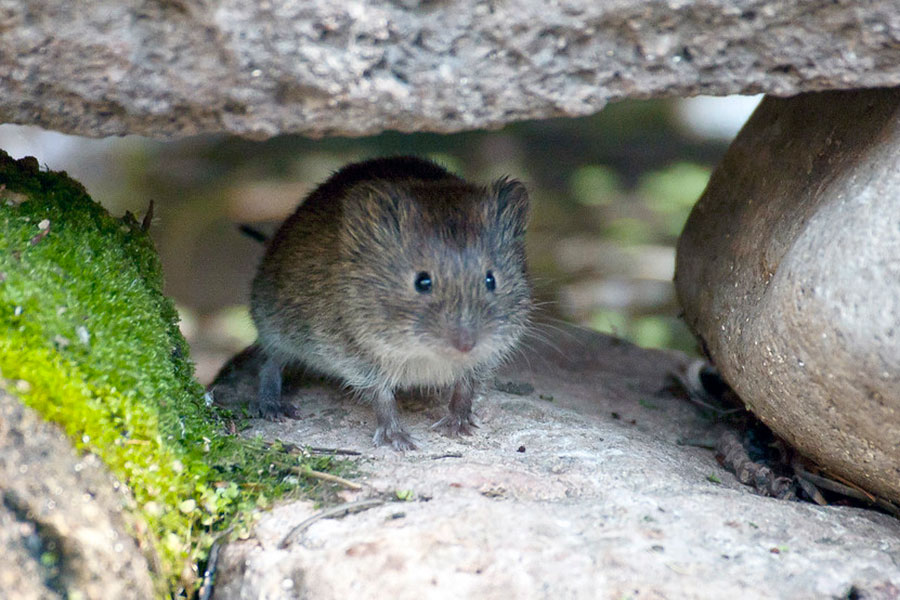Delisting Project
Hualapai Mexican Vole
(Microtus mexicanus hualpaiensis)
Error Deprives Use & Economic Harm
The Hualapai Mexican vole or Hualapai vole (Microtus mexicanus hualpaiensis) of Northern Arizona is now the first ESA-listed domestic species to be delisted by the U.S. Fish and Wildlife Service during the Trump Administration.
Documents
News Releases
Because listings of species under the Endangered Species Act in error can deprive landowners of the full use of their land and cause significant economic harm, Texas-based American Stewards of Liberty—a 501(c)(3) non-profit organization—previously launched a broad effort to delist the numerous species that were either listed in error or have since recovered in their natural habitat.
These species take up scarce resources and impose unnecessary burdens on landowners, including individuals and local governments.
Through comprehensive data and proven science, ASL, an organization dedicated to protecting private property rights while also freeing county and state governments from unnecessary, onerous, and often expensive regulations, is actively making the case to delist animal and plant species that do not require ongoing protection. ASL’s efforts apply to delisting flora and fauna anywhere in the United States where a species was listed in error, or where there is no longer a reasonable justification for a species to remain designated as endangered or threatened.
“I am glad to see the Service utilize common sense and science to finally delist the Hualapai vole. Although the vole had sufficiently recovered more than a decade ago, bureaucratic red tape and a general dereliction of duties delayed the species’ delisting,” said Congressional Western Caucus Chairman Paul Gosar (R-AZ, 4th). “Unnecessary and unwarranted listings like this ran rampant within the past administration, wreaking havoc on private land owners and delaying crucial economically beneficial projects. The Hualapai vole was just the tip of the iceberg. The agency and Congress must work with local stakeholders to bring the ESA into the 21st century. Hard-working American families, job-creators, and animals alike will reap significant benefits and be saved from potentially great economic harm when we make a concentrated effort to remove species such as the vole that have recovered, but are still showing up on the list.”
ASL has been working in partnership with Mohave County, Arizona, for years to delist the Hualapai Mexican vole. It is worth noting that in accordance with Endangered Species Listing guidelines, the petition process—from filing the petition to finalization of the rule listing, reclassification, or delisting a species—is supposed to be a 1.5 year process at most. In this case, the U.S. Fish & Wildlife Service (the Service) did not move on a positive 90-day finding on Arizona’s petition to delist the vole for seven years (from 2008 until 2015).
Thanks to the efforts of ASL—and its dedicated team of biologists and attorneys—along with the relentless support of Mohave County, AZ, this mouse-like animal is the latest species to be officially removed from the Endangered Species List.
Supervisor Gary Watson of Mohave County remarked, “The regulatory hurdles and economic impact of a long-term listing can cost landowners significantly. Today, our community can breathe a sigh of relief knowing that it has finally had this harmful burden lifted. We are grateful for this delisting decision and are glad its finally been properly addressed.”
Added Anita Waite, owner of Cane Springs Ranch, a ranch that runs cattle in Mohave County, “This unnecessary listing—and the delays that have accompanied its being properly reconciled—have been difficult for my family and me and have cost our business tens of thousands of dollars and countless hours in meeting regulatory requirements. This delisting brings about a welcome change not just for our Northern Arizona community, but also for aggrieved landowners across America who might be facing similar difficulties. We’re thankful to the work of our local leaders here in Mohave County and for the dedication of American Stewards of Liberty.”
This odyssey began in January of 1987 when the Service proposed to list the cinnamon-brown, mouse-like mammal of the Cricetidae family, as endangered under the Endangered Species Act (ESA) and published the final listing rule in October 1987.
At that time, the species was considered “extremely rare and [had] among the most restricted habitats of any North American mammal.”
In 2004, the Arizona Game and Fish Department (AGFD) submitted a petition to the Service requesting that the federal agency delist the Hualapai Mexican vole. In the petition, AGFD presented data to support its assertions that: (1) the subspecies occurs over a much greater area and in higher numbers than previously known; (2) it is likely that all populations referred to as Microtus mexicanus hualpaiensis, along with other populations of the species in Arizona, should be referred to as a single subspecies; and (3) the threats faced by this more widespread taxon do not indicate that listing under the ESA is warranted.
Then in 2008, the Service published a 90-Day Finding on the AGFD’s 2004 petition to delist the Hualapai Mexican vole. In its finding, the Service determined that AGFD presented “reliable and accurate information” in its 2004 petition indicating that the endangered Hualapai Mexican vole may not be a valid taxon or, if it is valid, then the listed subspecies occurs across a greater range than previously known. At the time, the Service concluded: “We find that the petition presents substantial information indicating that delisting this mammal may be warranted. We are initiating a status review to determine if delisting this subspecies is warranted.”
Yet, the Service failed to complete the delisting process. The Service then published a notice initiating a required five-year status review, but remarkably, the status review was not completed.
Ultimately, in January 2015, American Stewards of Liberty and Mohave County were compelled to file a Notice of Intent to sue the Service for its failure to take action on the State of Arizona’s much earlier petition to delist the Hualapai vole. The Service responded in early June of that year by announcing a 12-month finding on the petition and a proposed rule to remove the vole from the federal list of endangered and threatened wildlife. Based on the best available scientific and commercial information, the Service rightfully cited that the original classification is no longer the most appropriate, acknowledging, “that the currently listed subspecies is not a valid taxonomic entity.”
And now in April of 2017—nearly thirty years since its original listing—unwarranted regulations put in place for the sake of this species will no longer undercut the everyday efforts of hardworking American landowners.
ASL Executive Director Margaret Byfield declared, “This is why we do the work we do. Landowners in this country deserve to have full access to their land. We’re thankful that this long-awaited delisting has finally come to fruition. Our work to delist other species that should no longer be considered endangered or threatened continues. The work is challenging, but it’s an honor to serve landowners across the country in the fight to protect what is rightfully theirs.”
About the Endangered Species Act (and Information on Delisting)
Delisting a species from the protections of the Endangered Species Act (ESA) may occur as a result of achieving recovery, species extinction, or new analysis that indicates that the original listing was in error. Since 1973, when the ESA became law, nearly 2,400 domestic species have been listed (1,447 animals and 945 plants), but including the HMV, only 78 species have been delisted (65 domestic species and 13 foreign species). Of the domestic species only, 17 were delisted because the original data were found to be in error, 38 have recovered, and 10 have become extinct.
About American Stewards of Liberty
American Stewards of Liberty (ASL) is a 501(c)(3) non-profit organization dedicated to protecting private property that works closely with local governments and landowners across America, including: County Commissions, Conservation Districts, business owners, family farmers, ranchers, and homeowners who simply want to exercise the right to productively use their land.
Photo Credit: George Andrejko, Arizona Game & Fish Department Photographer
Other Delisting Projects
bone cave harvestman
Landowners and local governments faced serious economic problems due to the Service’s erroneous listing of this species.
American Burying Beetle
This species was listed in error. In 2020, the Service finalized its rule to down-list the species from endangered to threatened.
yellow-billed cuckoo
The Obama administrations’ analysis of the genetic and habitat data was believed to be in error at the time of listing in 2014.
navasota ladies’-tresses
So much more information has become available since it was listed in 1982 demonstrating the species is not at risk of extinction.
Delisting in the News
$250k Lost Annually by Family Ranchers with Wolves
The Office for Fiscal Regulatory Accountability (OFRA) has released a new estimate of the economic losses faced by family ranches when the endangered Grey Wolf is present on...
Prairie Chicken Delisted – Big Win for Landowners
On August 12th, a federal judge in Texas has, for a second time, vacated a Biden administration rule that listed the lesser prairie chicken as endangered and remanded the rule...
Legislation Filed to Remove Two Species from the ESA List
Legislation filed in Congress will remove the lesser prairie chicken and the dunes sagebrush lizard from the Endangered Species list freeing up energy and agricultural producers...




